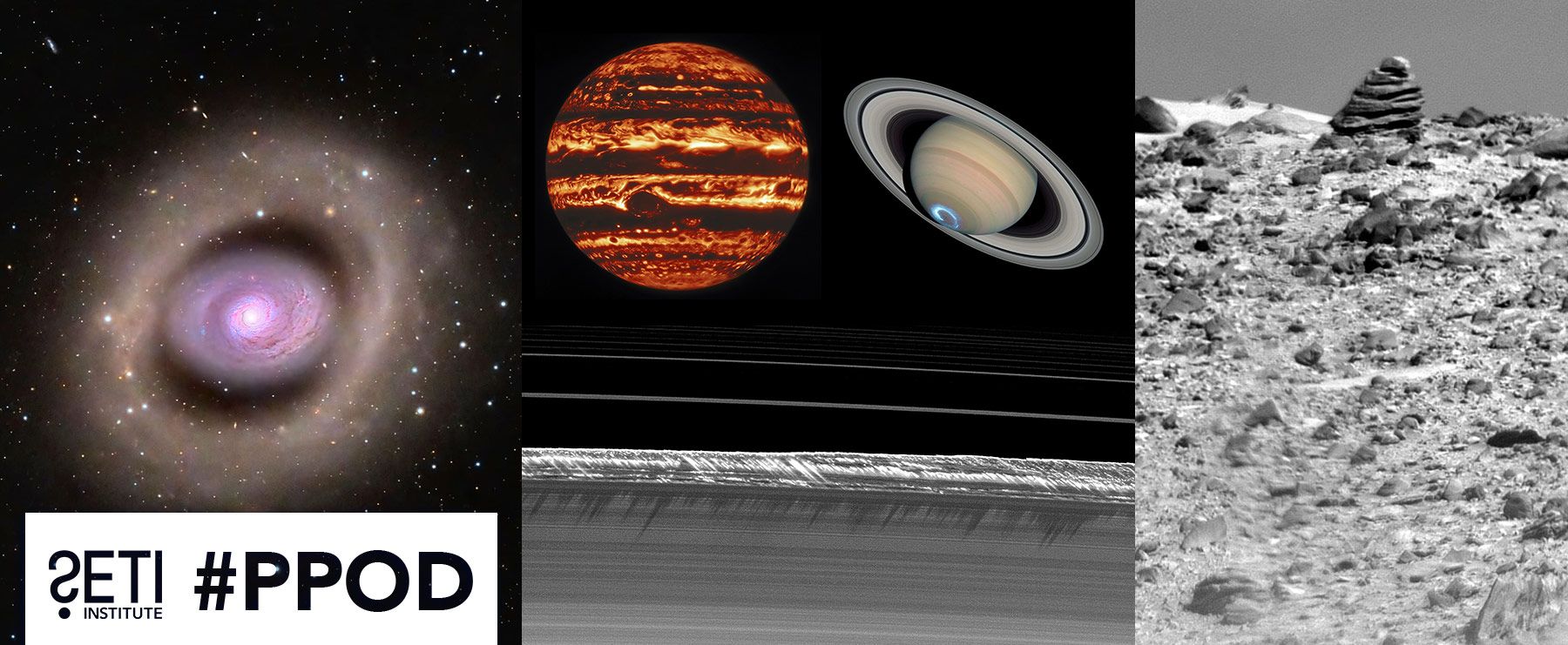
Planetary Picture of the Day
Week of June 5, 2023
Saturn's rings and aurora, a weird Mars rock, and Jupiter in the infrared shows its stripes.
Monday, June 5, 2023
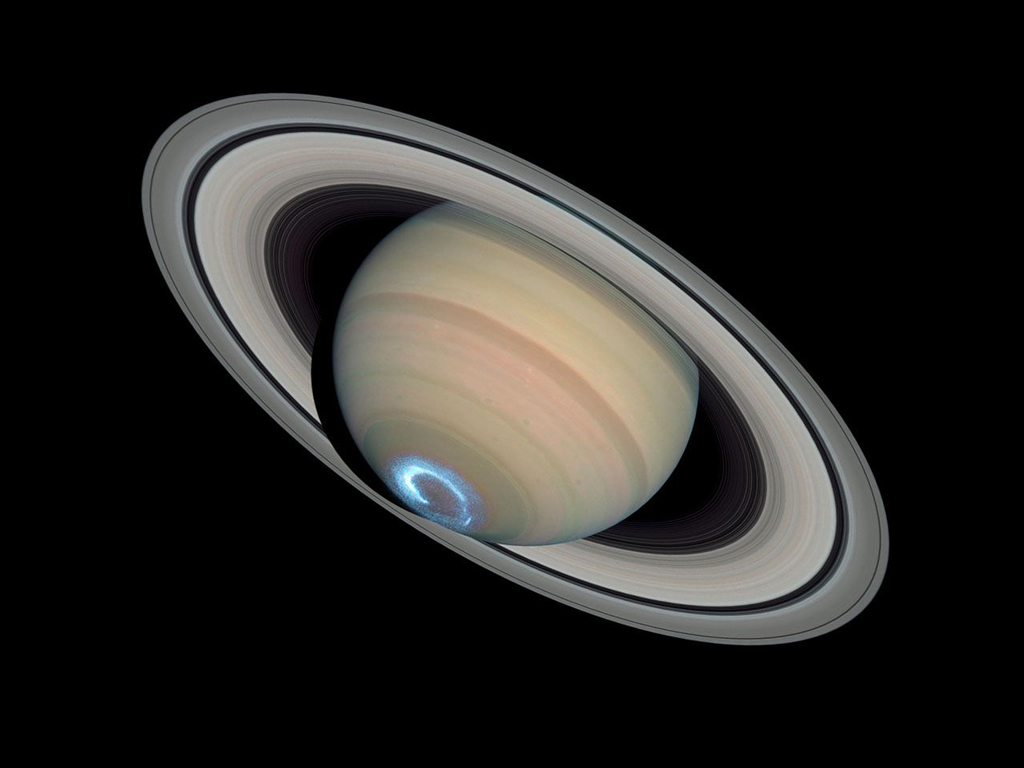
Saturn's Dynamic Aurorae
This is a single image from a sequence of three aurora images.
Astronomers combined ultraviolet images of Saturn's southern polar region with visible-light images of the planet and its rings to make this picture. The auroral display appears blue because of the glow of ultraviolet light. In reality, the aurora would appear red to an observer at Saturn because of the presence of glowing hydrogen in the atmosphere. On Earth, charged particles from the Sun collide with nitrogen and oxygen in the upper atmosphere, creating auroral displays colored mostly green and blue.
The ultraviolet image was taken on Jan. 28, 2004 by Hubble's Space Telescope Imaging Spectrograph. Erich Karkoschka of the University of Arizona, USA used the telescope's Advanced Camera for Surveys on March 22, 2004 to take the visible-light image.
Tuesday, June 6, 2023
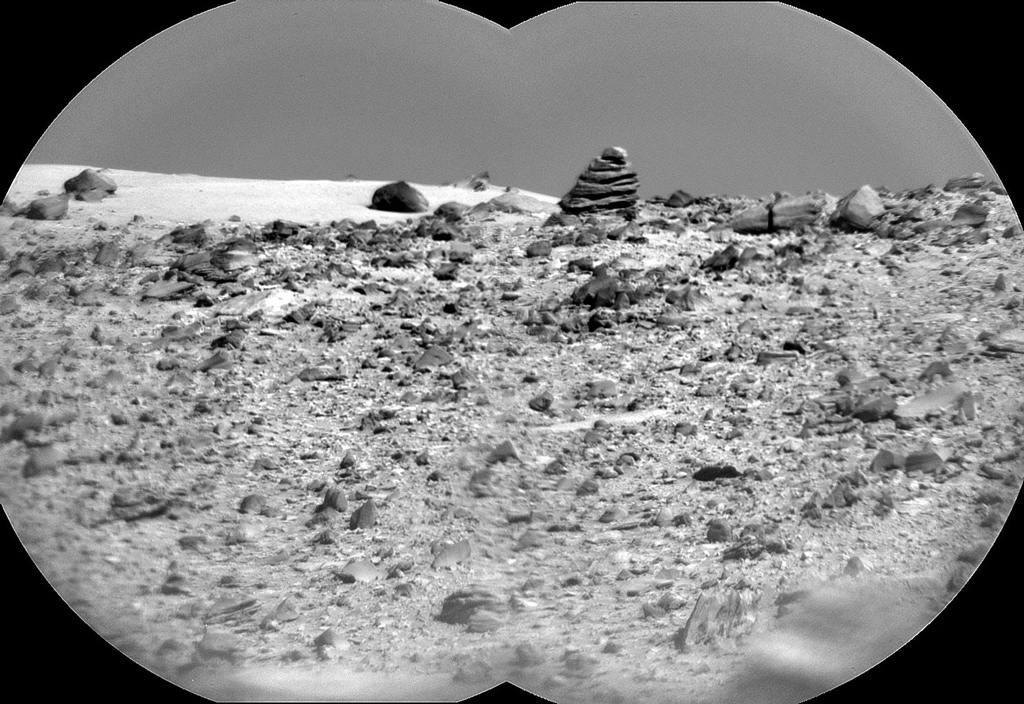
Strange Martian Rock
This rock looks like somebody built a cairn on Mars! However, the more likely origin is that one of the sandstones found everywhere in Gale crater was reworked nicely by erosion. NASA's Curiosity rover is getting closer, so we will get a better look soon. This is a ChemCam RMI mosaic built from data received on Sol 3841.
Wednesday, June 7, 2023
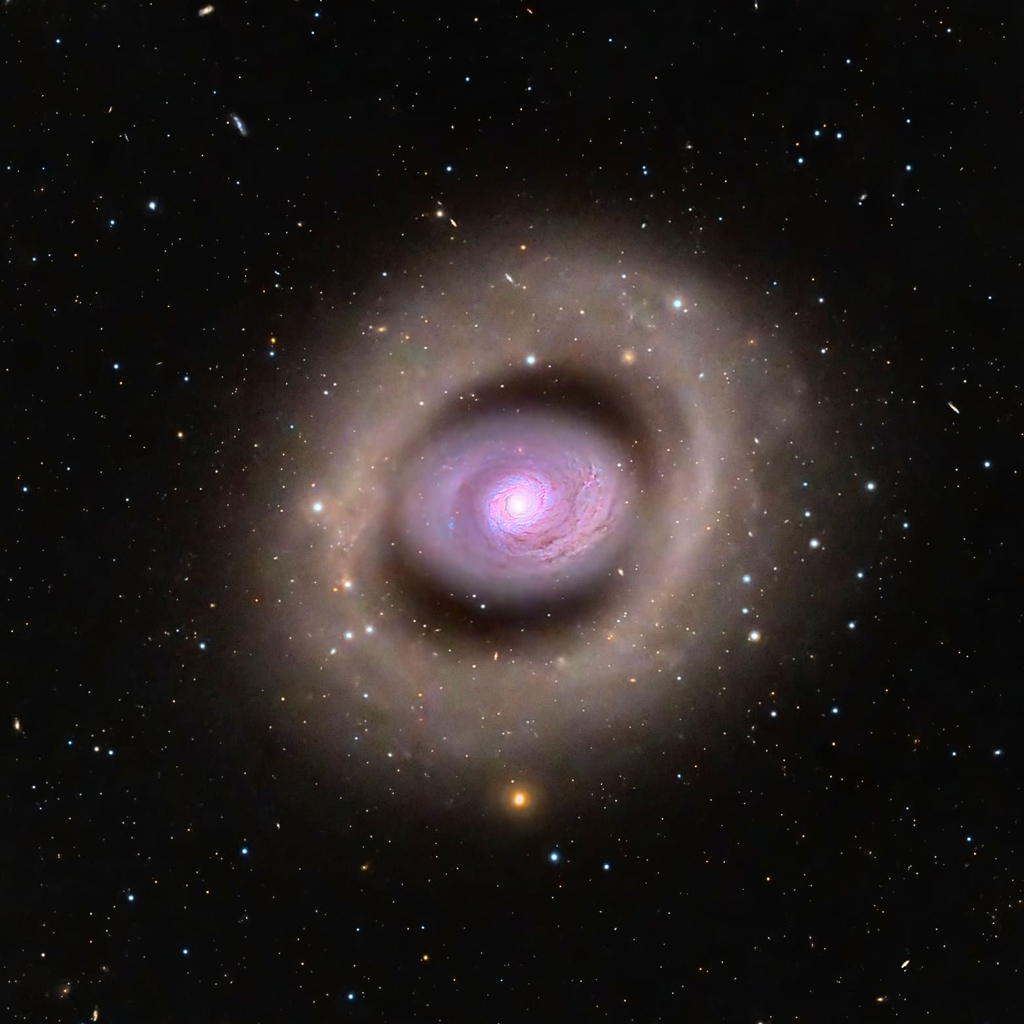
Cat's Eye Galaxy
Messier 94 (also known as NGC 4736) is a spiral galaxy in the mid-northern constellation Canes Venatici, located 16 million light years from Earth. The galaxy has two ring structures -- an inner ring full of star formation activity and... an outer ring that is actually a complex spiral arm structure also full of star formation.
The data for this image was collected over 25 hours from Oak Ridge, New Jersey, USA, using an Explore Scientific ED 102 mm APO Refractor Telescope and a ZWO ASI2600MM Pro Camera.
Thursday, June 8, 2023
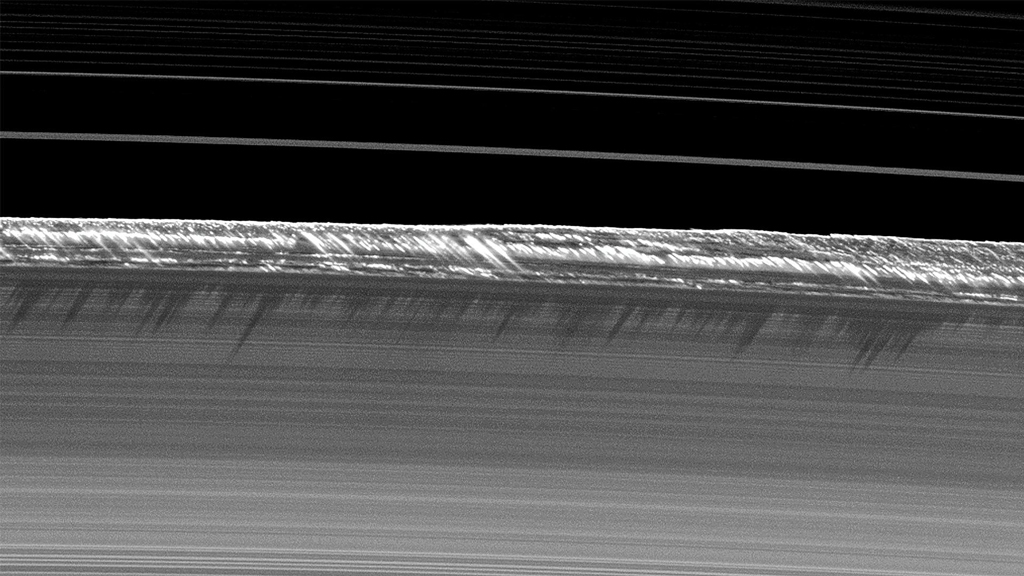
Saturn's Rings
This is part of Saturn's rings, seen from above. The Sun is shining from the top. Those dark, spiky shapes are the shadows of giant towers of ice along the ring's edge, some reaching heights of more than 2.5 kilometres above the ring plane. The presence of small, icy "moonlets" likely gravitationally force ring material near the edges into these towers.
This is NASA Photojournal image PIA11668, taken by the Cassini spacecraft on 26 July 2009 near Saturn equinox, when the Sun sees the rings almost edge on. This field of view spans about a 1,200 kilometre-long portion of the outer arc of the B ring; the spacecraft was approximately 336,000 km from Saturn at the time.
Friday, June 9, 2023
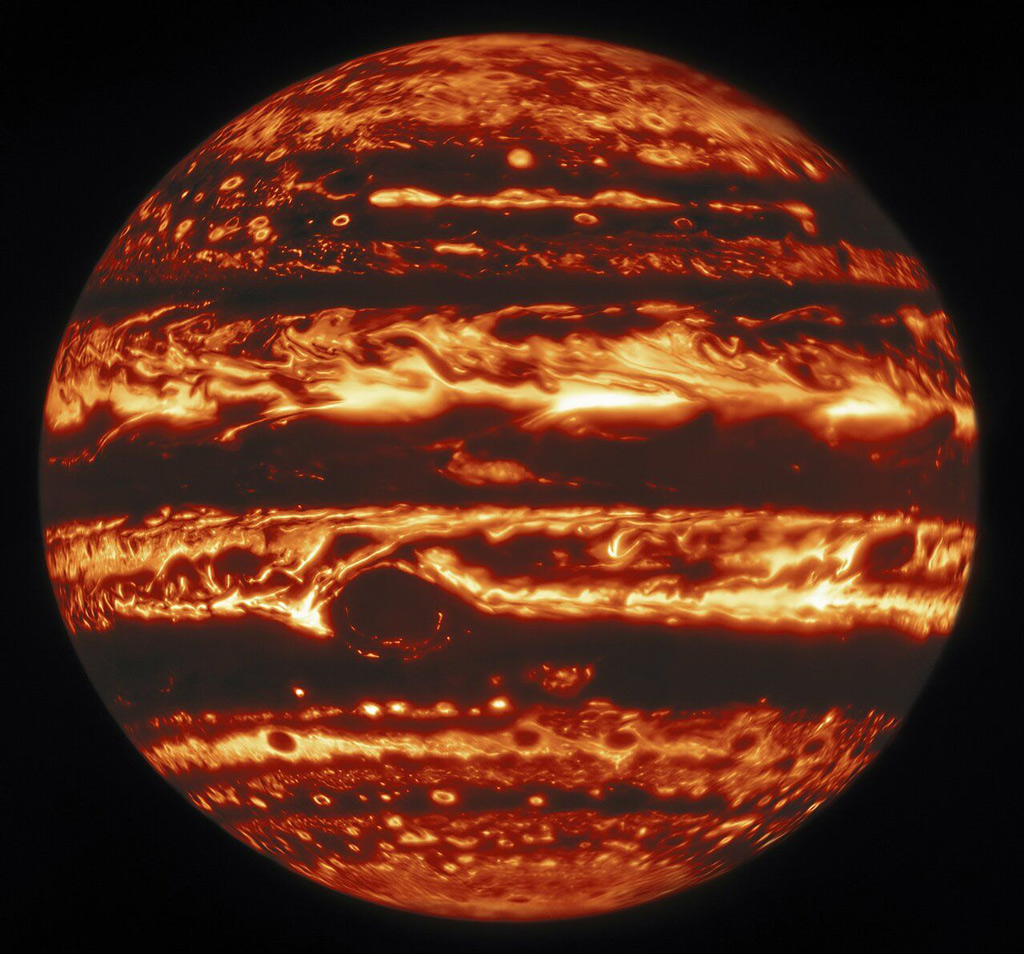
Jupiter Shows Its Stripes and Colors
This infrared view of Jupiter was created from data captured on 11 January 2017 with the Near-InfraRed Imager (NIRI) instrument at Gemini North in Hawaiʻi, the northern member of the international Gemini Observatory, a Program of NSF’s NOIRLab. It is actually a mosaic of individual frames that were combined to produce a global portrait of the planet.
In the image warmer areas appear bright, including four large hot spots that appear in a row just north of the equator. South of the equator, the oval-shaped and cloud-covered Great Red Spot appears dark.





